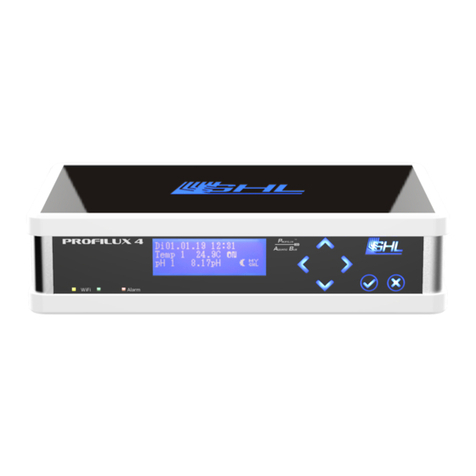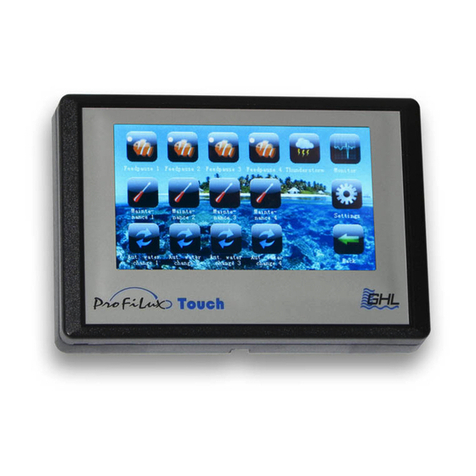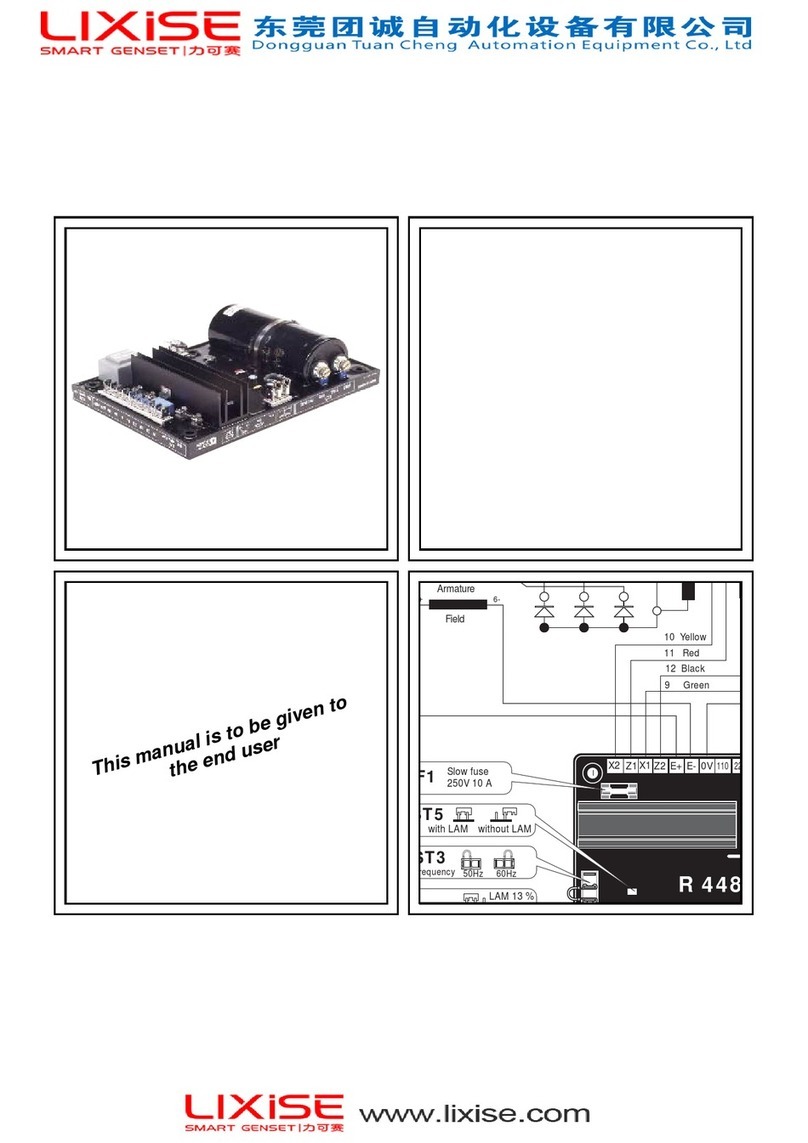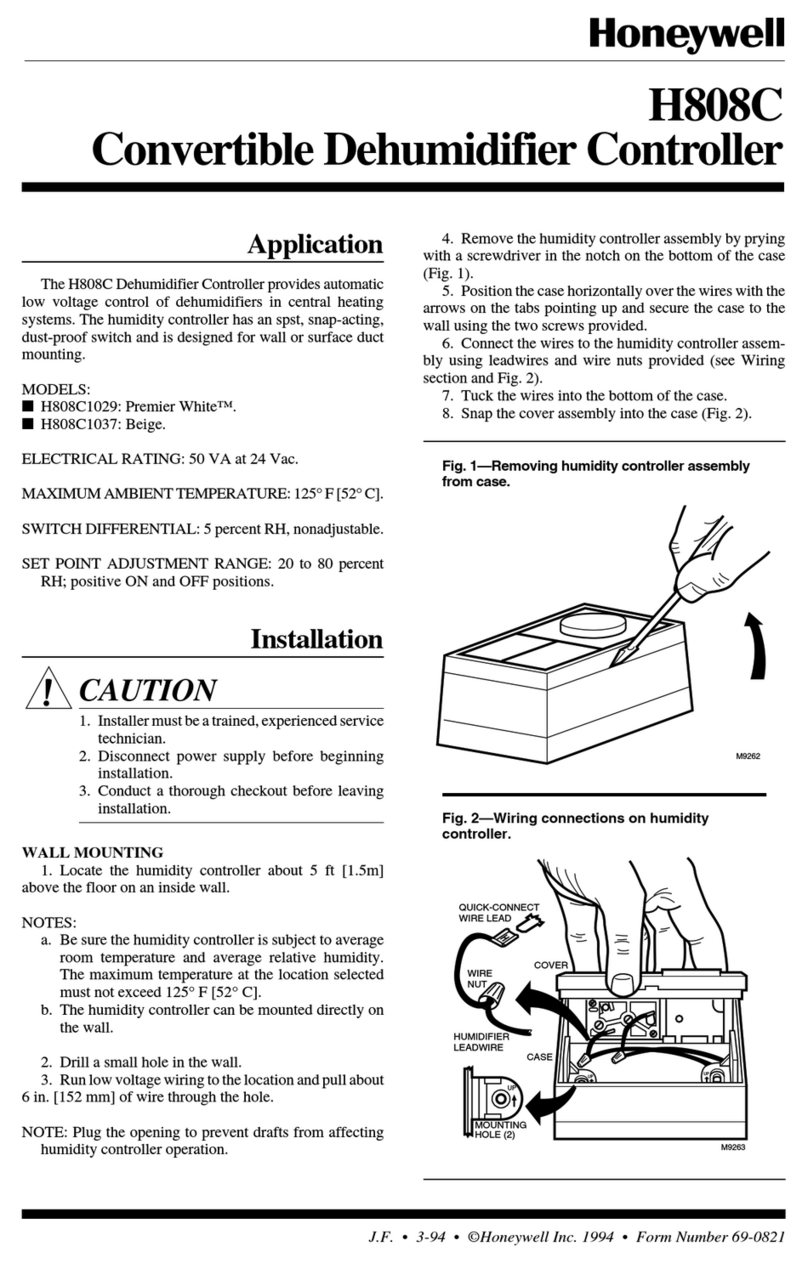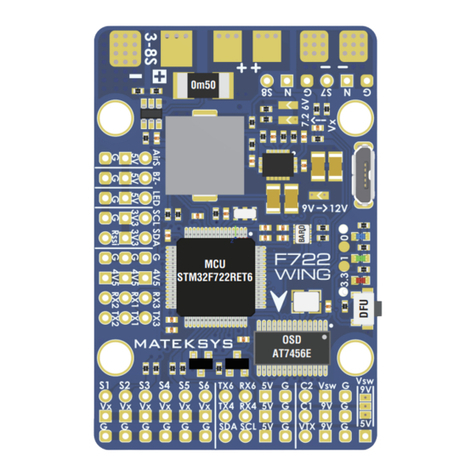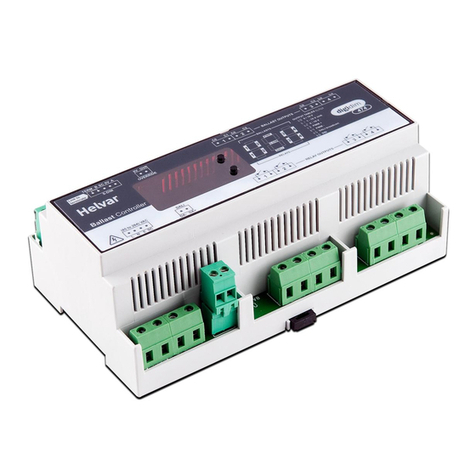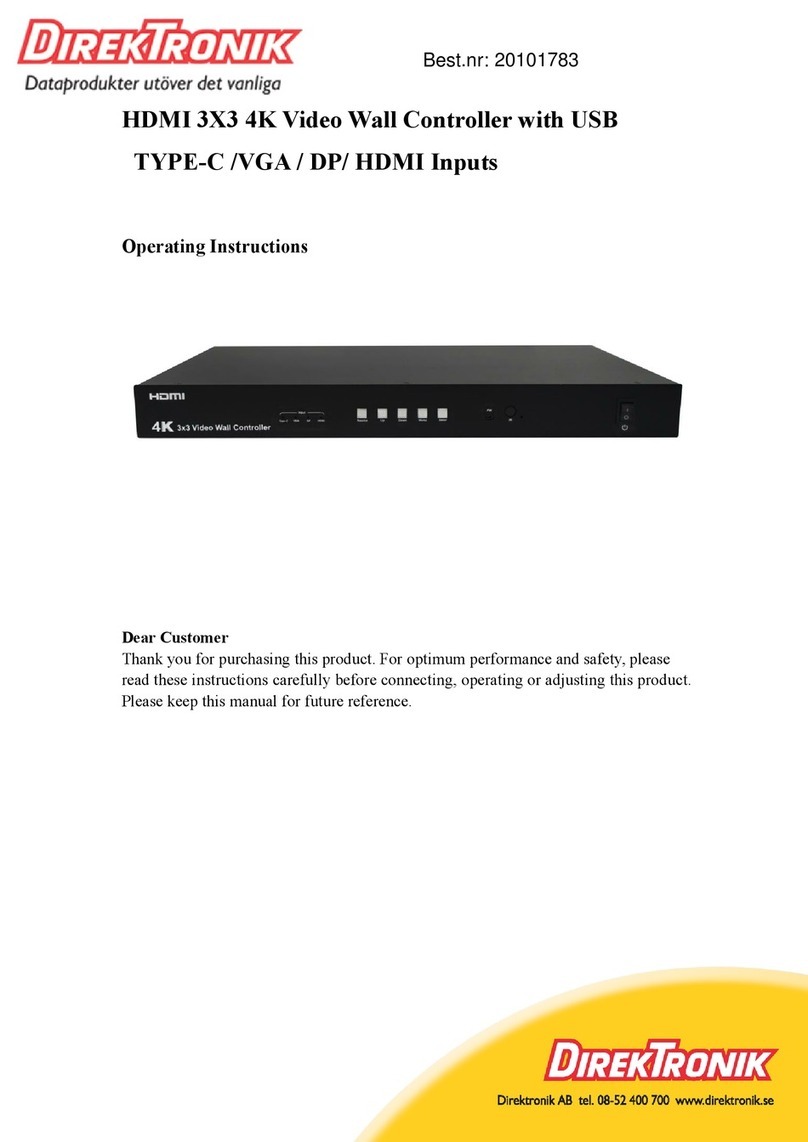GHL LEDControl4 V2 User manual

Electronic controller for LED-lamps LEDControl4 V2
Characteristics
LEDControl4 V2 converts 4 analog input voltages into 4 pulse width modulated (PWM) signals (Open-Drain) and includes drivers for the direct
connection of LEDs (max. 5 A in total). Furthermore with LEDControl4 external LED-drivers with PWM-input can be controlled. In order to
protect the connected ProfiLux from possible interferences, the input side is galvanically isolated from the output side through optocouplers.
In the delivery status, for 0% PWM the transistors are insulating (output is high-resistance), for 100% PWM the output is permanently pulled to
minus potential. The polarity of the PWM can be inverted. Through this you achieve that for 0% PWM the outputs are permanently pulled to
minus potential and for 100% PWM the outputs are high-resistance. Through a new inversion you can switch again to the original state.
LEDControl4 can produce „flashes“ during a thunderstorm simulation in ProfiLux. During a flash the PWM-signal is set for a short time to 50%,
75% or 100%, independently from the belonging analog input. Flashes can be output at channel 3 and channel 4, the flashing behavior can be
set, see below. Not all L-ports are suited for the generation of a flash. Presently the onboard interfaces of ProfiLux and the interfaces in the
ExpansionBox support the flash function.
According to the connection, LEDControl4 can be used for the operation with LED-lamps or with LED-drivers.
Input voltage (control voltage of L-ports) vs. PWM-output:
Assignment of screw terminal PWM-OUT:
Pin
Signal
Description
1
LED +
Here the plus potential of the power supply applies, the + line of the LEDs of LED-lamps is connected here
2
LED PWM 4
Here the PWM of the fourth channel (L4, right L-port) applies, at this channel a flash is always generated
3
LED PWM 3
Here the PWM of the third channel (L3, right L-port) applies, at this channel the flash function can be disabled
4
LED PWM 2
Here the PWM of the second channel (L2, left L-port) applies
5
LED PWM 1
Here the PWM of the first channel (L1, left L-port) applies
6
LED -
Here the minus potential of the power supply applies, for LED-drivers here the ground of the PWM-inputs are
connected
0%
10%
20%
30%
40%
50%
60%
70%
80%
90%
100%
0 1 2 3 4 5 6 7 8 9 10
PWM / Uin [V]
L1L2
L3L4
PWM-OUT
DCin
1
2
3
4
5
6
Pins with flash function

Operation with LED-lamps:
Preconditions (not included in shipment)
2 or 4 free 1-10 V-interfaces (1 or 2 L-ports) at ProfiLux
LED-lamps with common anode (+) which can be controlled via PWM (Open Drain)
power supply with adequate voltage and power
Connection and operation
To the DC-socket (DCin) a suited power supply unit is connected. Alternatively pins 1 (+) and 6 (-) can be used for the power supply.
The supplied control lines (Western cables) are at one end connected to the corresponding sockets of LEDControl4 (L1L2, L3L4), on the other
end to free sockets with 1-10V-interface (e.g. L1L2 and L3L4) of ProfiLux.
The LED-lamp is connected via the supplied screw-type terminal to (PWM-OUT), here Plus applies permanently, Minus is pulsed with PWM.
Several LED-lamp manufacturers offer suited adapter cables for connecting their lamps to LEDControl4.
Please note that pin 6 of the LEDControl4 V2 socket remains free if the plug has 5 pins!
Block diagram for connection of a LED-lamp:
Example 1:
Connection of two light stripes red and white with a nominal voltage of 24V.
In this case a power supply unit with 24V (with DC-plug, plus pole inside) is needed. The plus line of both LED-stripes must be connected to the
PWM-OUT connection leftmost (Pin 1). The minus line of the white LED-stripe must be connected to the PWM-channel 4 (Pin 2) and the minus
line of the red LED-stripe must be connected to the PWM-channel 3 (Pin 3). Since only the first two PWM-channels (Pin 2 & Pin 3) are used,
only the right L-port (L3L4) of LEDControl4 has to be connected with a free L-port at ProfiLux, the other L-port is unused and can left free. If
only white flashes shall be generated, LEDControl4 must be programmed to „Flash at channel 1“in order that the other channel with the red
LEDs doesn’t generate a flash.
Example 2:
Connection of a light stick or light stripe with 4 colors (red, green, blue and white). The light stick resp. light stripe has a nominal voltage of 12
V and a common anode (+) for all colors.
In this case a power supply unit with 12 V (with DC-plug, plus pole inside) is required. The common plus line must be connected to the PWM-
OUT connection leftmost (Pin 1). The colors white, blue, green and red are connected with Pin 2 to Pin 5. It is recommended to connect the
white LEDs to PWM-channel 4 (Pin 2), since here a flash can be generated. If you like to have white-blue flashes, then connect the blue LEDs
with PWM-channel 3 (Pin 3) and program in ProfiLuxControl „Flash at channel 1 & channel 2“. The connection rightmost (Pin 6) remains free.
LED-lamp
ProfiLux
1 –10 V interface
channels 1 & 2
ProfiLux
1 –10 V interface
channels 3 & 4
LED-power supply
PWM-OUT

Operation with LED-driver:
Preconditions (not included in shipment)
2 or 4 free 1-10 V-interfaces (1 or 2 L-ports) at ProfiLux
LED-driver which can be controlled (dimmed) via PWM (Open Drain)
Connection and operation
The supplied control lines (Western cables) are at one end connected to the corresponding sockets of LEDControl4 V2 (L1L2, L3L4), on the
other end to free sockets with 1-10V-interface (e.g. L1L2 and L3L4) of ProfiLux. The control inputs of the LED-drivers are connected via the
supplied screw-type terminal to (PWM-OUT).
Possibly pull-up-resistors on the control inputs of the drivers are required.
Block diagram for connecting four LED-drivers:
* The pull-up-resistors are necessary if in the LED-driver internally at the PWM-input no pull-up-resistor is integrated.
Example 1:
The LED-driver has a PWM-input with integrated pull-up-resistor.
Here it is sufficient to connect the PWM-input of the LED-driver with a PWM-output (Pin 2, Pin 3, Pin 4 or Pin 5) of PWM-OUT.
If several drivers or one driver shall be connected with several PWM-inputs, then for the separate dimming you have to connect one PWM-
input with one PWM-output of LEDControl4 V2 each. The ground of the PWM-input (often named with 0 V or GND) is connected to the PWM-
OUT connection rightmost (Pin 6) –for several drivers the ground has to be connected in parallel. The PWM-OUT connection leftmost (Pin 1)
remains free.
Example 2:
The LED-driver disposes of a TTL-compatible PWM-input (control input for 5 V-level). But no pull-up-resistor is integrated in the driver. At the
driver, no connection for the control voltage supply (here in the example 5 V) is available.
For the control of a TTL-compatible PWM-input a power supply unit with 5 V and external pull-up-resistors are necessary. The value of the
resistors should be 470 Ohm to 10 kOhm according to the requirements of the PWM-input of the LED-driver.
Further information you will get from the data sheet of the LED-driver or from the manufacturer of the LED-driver.
The wiring must be made according to the example before. But in this case additionally the power supply unit is connected to the DCin-socket.
Furthermore one end of the pull-up-resistors is connected each to the single PWM-inputs of the drivers (or to Pin 2 … Pin 5 from PWM-OUT).
The other end of the pull-up-resistors (+V) is connected with Pin 1 from PWM-OUT.
PWM-OUT

Settings
Please don’t forget to program the corresponding 1 –10 V interfaces and illumination channels of ProfiLux adequately.
In LEDControl4 V2 you can set the flashing behavior. The settings are made in ProfiLuxControl and are transferred via ProfiLux to LEDControl4
V2. These settings are stored in LEDControl4 V2 and remain also without operating voltage. The following settings are possible:
Reaction to Flash 1, Flash 2 or Flash 1 & 2
PWM for Flash at 50%, 75% or 100%
Invert output signal (Change between inverted and not inverted PWM-output signal)
Change between Flashes at PWM channel 4 and Output Flashes at PWM channels 3 & 4
You can find more information regarding the settings in the manual of your ProfiLux.
Problem description
Cause
The brightness of the LEDs can’t be set (is
permanently on or off), the status LED at
LEDControl4 V2 is on.
The power supply (DCin) is not connected or doesn’t supply voltage.
There haven’t been assigned any or have been assigned false illumination channels to the 1
–10 V interfaces (L-ports) connected to LEDControl4 V2.
The LEDs or the external LED-driver haven’t been connected correctly.
At the external LED-driver the pull-up-resistors haven’t been connected correctly.
The brightness of the LEDs can’t be set (is
permanently on or off), the status LED at
LEDControl4 V2 is off.
The 1 –10 V interfaces (L-ports) of ProfiLux and of LEDControl4 V2 are not correctly
connected or are connected by mistake to another socket.
The brightness is for 0% illumination maximal
and for 100% the illumination is off.
The PWM-pulsing must be inverted. This can be simply done via ProfiLux-Control.
You can’t see a flash during a thunderstorm.
In the illumination settings the flash function is not activated.
The flash intensity is less than the current illumination.
LEDControl4 V2 is connected to the L-ports which can’t generate a flash.
The respective LEDs are not connected to PWM channel 3 or PWM channel 4.
During the programming of LEDControl4 V2
the brightness of the connected LEDs
changes and the status LED blinks.
The status LED shows the programming state. The brightness change of the LEDs is a
normal behavior during programming.
Important hints
Electrical installations must always be made by a qualified person.
Please pay attention that the LED-lamps that are connected are compatible, currents, voltages and polarity have to be considered.
Protect LEDControl4 V2 from splash water and too high humidity.
Make in any case sure that the device is used according to the technical data above –wrong installation or an overload will
destroy LEDControl4! If you are not sure about the connection data of your lamp ask the lamp manufacturer for details.
The non-observance of this manual or the improper use may lead to damages, the repair of these damages are not covered by warranty!
Technical data
Input voltage range
5 V … 48 V, Polarity: + inside, - outside, DC-socket 5.5/2.1mm
Maximal current per channel or in sum
5 A
Number of channels
4
Input voltage range analog inputs
0 V … 10 V
PWM-switching frequency
122Hz
Disclaimer
The manufacturer refuses any liability for (consequential) damages which occur through the use of this device as far as legally allowed.
2016-01-12
GHL Advanced Technology
GmbH & Co. KG
Marie-Curie-Str. 20
67661 Kaiserslautern
www.aquariumcomputer.com

Elektronischer Regler für LED-Leuchten LEDControl4 V2
Eigenschaften
LEDControl4 V2 wandelt 4 analoge Eingangsspannungen in 4 pulsweitenmodulierte (PWM) Signale (Open-Drain) um und beinhaltet Treiber
zum direkten Anschluss von LEDs (max. 5 A insgesamt). Zudem können mit dem LEDControl4 externe LED-Treiber mit PWM-Eingang
angesteuert werden. Um den angeschlossenen ProfiLux vor eventuellen Störungen zu schützen ist die Eingangsseite von der Ausgangsseite
durch Optokoppler galvanisch getrennt.
Im Auslieferungszustand sind bei 0% PWM die Transistoren nichtleitend (Ausgang ist hochohmig), bei 100% PWM wird der Ausgang
permanent auf Minuspotenzial gezogen. Die Polarität der PWM kann invertiert werden. Damit wird erreicht, dass bei 0% PWM die Ausgänge
permanent auf Minuspotenzial gezogen werden und bei 100% PWM die Ausgänge hochohmig sind. Durch erneute Invertierung wird wieder
zum ursprünglichen Zustand gewechselt.
LEDControl4 kann „Blitze“ während einer Gewittersimulation im ProfiLux erzeugen. Während eines Blitzes wird das PWM-Signal unabhängig
vom zugehörigen analogen Eingang kurzzeitig auf 50%, 75% oder 100% gestellt. Blitze können auf Kanal 3 und Kanal 4 ausgegeben werden, das
Blitzverhalten ist einstellbar, siehe unten. Nicht alle L-Ports sind für die Generierung eines Blitzes geeignet. Derzeit unterstützen die Onboard-
Schnittstellen des ProfiLux und die Schnittstellen in der ExpansionBox die Blitzfunktion.
Je nach Verschaltung kann LEDControl4 für den Betrieb mit LED-Leuchten oder für den Betrieb mit LED-Treibern verwendet werden.
Eingangsspannung (Steuerspannung der L-Ports) zu PWM-Ausgang:
Belegung der Schraubklemme PWM-OUT:
Pin
Signal
Beschreibung
1
LED +
Hier liegt das Pluspotenzial des Netzteils an, die + Leitung der LEDs von LED-Leuchtmitteln wird hier angeschlossen
2
LED PWM 4
Hier liegt die PWM des vierten Kanals (L4, rechter L-Port) an, an diesem Kanal wird immer ein Blitz generiert
3
LED PWM 3
Hier liegt die PWM des dritten Kanals (L3, rechter L-Port) an, an diesem Kanal ist die Blitzfunktion abschaltbar
4
LED PWM 2
Hier liegt die PWM des zweiten Kanals (L2, linker L-Port) an
5
LED PWM 1
Hier liegt die PWM des ersten Kanals (L1, linker L-Port) an
6
LED -
Hier liegt das Minuspotenzial des Netzteils an, bei LED-Treibern wird hier die Masse der PWM-Eingänge
angeschlossen
0%
10%
20%
30%
40%
50%
60%
70%
80%
90%
100%
0 1 2 3 4 5 6 7 8 9 10
PWM / Uin [V]
L1L2
L3L4
PWM-OUT
DCin
1
2
3
4
5
6
Pins mit Blitz-Funktion

Betrieb mit LED-Leuchtmittel:
Voraussetzungen (nicht im Lieferumfang enthalten)
2 oder 4 freie 1-10 V-Schnittstellen (1 oder 2 L-Ports) am ProfiLux
LED-Leuchten mit gemeinsamer Anode (+), die über PWM (Open Drain) angesteuert werden können
Netzteil mit passender Spannung und Leistung
Anschluss und Betrieb
An die DC-Buchse (DCin) wird ein geeignetes Netzgerät angeschlossen. Alternativ können auch Klemmen 1 (+) und 6 (-) zur Stromversorgung
genutzt werden.
Die beiliegenden Steuerleitungen (Westernkabel) werden einerseits in die entsprechenden Buchsen von LEDControl4 (L1L2, L3L4), andererseits
in freie Buchsen mit 1-10V-Schnittstelle (z.B. L1L2 und L3L4) des ProfiLux gesteckt.
Die LED-Leuchte wird mit der mitgelieferten Schraubklemme an (PWM-OUT) angeschlossen, dabei ist Plus dauerhaft anliegend, Minus wird mit
PWM getaktet.
Manche LED-Leuchten-Hersteller bieten passende Adapterkabel zum Anschluss ihrer Leuchte am LEDControl4 an.
Beachten Sie bitte, dass bei 5poligen Steckern Pin 6 der LEDControl4 V2 Buchse frei bleibt!
Blockschaltbild für Anschluss eines LED-Leuchtmittels:
Beispiel 1:
Anschluss zweier Leuchtstreifen Rot und Weiß mit einer Nennspannung von 24 V.
In dem Fall wird ein Netzteil mit 24 V (mit Hohlstecker, Pluspol innen) benötigt. Die Plusleitung beider LED-Streifen kommt an den PWM-OUT
Anschluss ganz links (Pin 1). Die Minusleitung des weißen LED-Streifens kommt an den PWM-Kanal 4 (Pin 2) und die Minusleitung des roten
LED-Streifens kommt an den PWM-Kanal 3 (Pin 3). Da nur die letzen zwei PWM-Kanäle (Pin 2 & Pin 3) benutzt werden, ist nur der rechte L-Port
(L3L4) des LEDControl4 mit einem freien L-Port am ProfiLux zu verbinden, der andere L-Port ist unbenutzt und kann frei bleiben. Wenn nur
weiße Blitze generiert werden sollen, muss LEDControl4 auf „Blitz auf Kanal 1“ programmiert werden, damit der andere Kanal mit den roten
LEDs keinen Blitz generiert.
Beispiel 2:
Anschluss eines Leuchtstabes oder Leuchtstreifens mit 4 Farben (Rot, Grün, Blau und Weiß). Der Leuchtstab bzw. Leuchtstreifen hat eine
Nennspannung von 12 V und gemeinsame Anode (+) für alle Farben.
In dem Fall wird ein Netzteil mit 12 V (mit Hohlstecker, Pluspol innen) benötigt. Die gemeinsame Anode (+) kommt an den PWM-OUT
Anschluss ganz links (Pin 1). Die Farben Weiß, Blau, Grün und Rot werden mit Pin 2 bis Pin 5 verbunden. Es empfiehlt sich, die weißen LEDs an
den PWM-Kanal 4 (Pin 2) anzuschließen, da dort ein Blitz generiert werden kann. Möchte man Weiß-Blaue Blitze, so schließt man die blauen
LEDs mit dem PWM-Kanal 3 (Pin 3) an und programmiert in ProfiLuxControl „Blitz auf Kanal 1 & Kanal 2“. Der Anschluss ganz rechts (Pin 6)
bleibt frei.
LED-Leuchtmittel
ProfiLux
1 –10 V Schnittstelle
(Kanäle 1 & 2)
ProfiLux
1 –10 V Schnittstelle
(Kanäle 3 & 4)
LED-Netzteil
PWM-OUT

Betrieb mit LED-Treiber:
Voraussetzungen(nicht im Lieferumfang enthalten)
2 oder 4 freie 1-10 V-Schnittstellen (1 oder 2 L-Ports) am ProfiLux
LED-Treiber, die über PWM (Open Drain) angesteuert (gedimmt) werden können
Anschluss und Betrieb
Die beliegenden Steuerleitungen (Westernkabel) werden einerseits in die entsprechenden Buchsen von LEDControl4 V2 (L1L2, L3L4),
andererseits in freie Buchsen mit 1-10V-Schnittstelle (z.B. L1L2 und L3L4) des ProfiLux gesteckt. Die Steuereingänge der LED-Treiber werden
mit der mitgelieferten Schraubklemme an (PWM-OUT) angeschlossen.
Eventuell sind Pull-Up-Widerstände an den Steuereingängen der Treiber erforderlich.
Blockschaltbild für Anschluss von vier LED-Treibern:
* Die Pull-Up-Widerstände sind notwendig, wenn im LED-Treiber intern am PWM-Eingang kein Pull-Up-Widerstand integriert ist.
Beispiel 1:
Der LED-Treiber verfügt über einen PWM-Eingang mit integriertem Pull-Up-Widerstand.
Hier genügt es den PWM-Eingang des LED-Treibers mit einem PWM-Ausgang (Pin 2, Pin 3, Pin 4 oder Pin 5) von PWM-OUT zu verbinden.
Sollen mehrere Treiber oder ein Treiber mit mehreren PWM-Eingängen angeschlossen werden, dann ist für die getrennte Dimmung jeweils ein
PWM-Eingang mit einem PWM-Ausgang des LEDControl4 V2 zu verbinden. Die Masse des PWM-Eingangs (oft mit 0 V oder GND bezeichnet)
wird am PWM-OUT Anschluss ganz rechts (Pin 6) angeschlossen –bei mehreren Treibern ist Masse parallel zu schalten. Der PWM-OUT
Anschluss ganz links (Pin 1) bleibt frei.
Beispiel 2:
Der LED-Treiber verfügt über einen TTL-kompatiblen PWM-Eingang (Steuereingang für 5 V-Pegel). Jedoch ist im Treiber kein Pull-Up-
Widerstand integriert. Es steht am Treiber kein Anschluss für die Steuerspannungsversorgung (hier in dem Beispiel 5 V) zur Verfügung.
Für die Ansteuerung eines TTL-kompatiblen PWM-Eingangs sind ein Netzteil mit 5 V sowie externe Pull-Up-Widerstände notwendig. Der Wert
der Widerstände sollte 470 Ohm bis 10 kOhm betragen und hängt ab von den Erfordernissen des PWM-Eingangs des LED-Treibers.
Nähere Informationen müssen dem Datenblatt des LED-Treibers entnommen oder vom Hersteller des LED-Treibers erfragt werden.
Die Verdrahtung ist wie im vorigen Beispiel vorzunehmen. Jedoch wird bei dem vorliegenden Fall zusätzlich das Netzteil an der DCin-Buchse
angeschlossen. Desweiteren wird das eine Ende der Pull-Up-Widerstände jeweils an die einzelnen PWM-Eingänge der Treiber (oder an Pin 2 …
Pin 5 von PWM-OUT) angeschlossen. Das andere Ende der Pull-Up-Widerstände (+V) wird zusammen mit Pin 1 von PWM-OUT verbunden.
PWM-OUT

Einstellungen
Vergessen Sie bitte nicht die entsprechenden 1 –10 V-Schnittstelle und Beleuchtungskanäle des ProfiLux passend zu programmieren.
Im LEDControl4 V2 kann das Blitzverhalten eingestellt werden. Die Einstellungen werden in ProfiLuxControl vorgenommen und über den
ProfiLux zu LEDControl4 V2 geschickt. Diese Einstellungen werden im LEDControl4 V2 abgespeichert und bleiben auch ohne Betriebsspannung
erhalten. Folgende Einstellungen sind möglich:
Reaktion auf Blitz 1, Blitz 2 oder Blitze 1 & 2
PWM bei Blitz auf 50%, 75% oder 100%
Ausgangssignal invertieren (Wechsel zwischen invertiertem und nicht invertiertem PWM-Ausgangssignal)
Wechsel zwischen Blitze auf PWM-Kanal 4 und Blitze auf PWM-Kanäle 3 & 4 ausgeben
Mehr zu den Einstellungen finden Sie in der Bedienungsanleitung des ProfiLux.
Problembeschreibung
Ursache
Die Helligkeit der LEDs kann nicht eingestellt
werden (ist permanent an oder aus), die
Status-LED am LEDControl4 V2 ist an.
Die Stromversorgung (DCin) ist nicht angeschlossen oder liefert keine Spannung.
Den mit LEDControl4 V2 verbundenen 1 –10 V Schnittstellen (L-Ports) am ProfiLux wurden
keine oder falsche Beleuchtungskanäle zugeordnet.
Die LEDs oder der externe LED-Treiber wurden nicht korrekt angeschlossen.
Am externen LED-Treiber wurden die Pull-Up-Widerstände nicht korrekt angeschlossen.
Die Helligkeit der LEDs kann nicht eingestellt
werden (ist permanent an oder aus), die
Status-LED am LEDControl4 V2 ist aus.
Die 1 –10 V Schnittstellen (L-Ports) des ProfiLux und des LEDControl4 V2 sind nicht korrekt
verbunden oder fälschlicherweise an einer anderen Buchse angeschlossen.
Die Helligkeit ist bei 0% Beleuchtung maximal
und bei 100% ist die Beleuchtung aus.
Die PWM-Taktung muss invertiert werden. Dies ist ganz einfach per ProfiLuxControl
möglich.
Es ist kein Blitz bei Gewitter zu sehen.
In den Beleuchtungseinstellungen ist die Gewitterfunktion nicht aktiviert.
Die Blitzstärke ist geringer als die aktuelle Beleuchtung.
LEDControl4 V2 ist an L-Ports angeschlossen, die keinen Blitz generieren können.
Die betreffenden LEDs sind nicht an PWM-Kanal 3 oder PWM-Kanal 4 angeschlossen.
Beim Programmieren des LEDControl4 V2
ändert sich die Helligkeit der
angeschlossenen LEDs und die Status-LED
blinkt.
Die Status-LED zeigt den Programmierstatus an. Die Helligkeitsänderung der LEDs ist ein
normales Verhalten während der Programmierung.
Wichtige Hinweise
Elektrische Installationen müssen von einer qualifizierten Person ausgeführt werden.
Achten Sie darauf, dass die anzuschließenden LED-Leuchten kompatibel sind, Ströme, Spannungen und Polarität sind zu beachten.
Schützen Sie LEDControl4 V2 vor Spritzwasser und hoher Luftfeuchtigkeit.
Stellen Sie unbedingt sicher, dass die technischen Daten eingehalten werden - eine Überlastung oder falscher Anschluss wird
LEDControl4 V2 zerstören. Im Zweifelsfall fragen Sie den Leuchtenhersteller nach den Anschlussdaten der Leuchte.
Unsachgemäße Verwendung oder die Nichtbeachtung dieser Anleitung kann zu Schäden führen, deren Reparatur nicht der Gewährleistung
unterliegt.
Technische Daten
Eingangsspannungsbereich
5 V … 48 V, Polarität: + innen, - außen, DC-Buchse 5.5/2.1mm
Maximaler Strom pro Kanal oder in Summe
5 A
Anzahl Kanäle
4
Eingangsspannungsbereich analoge Eingänge
0 V … 10 V
PWM-Schaltfrequenz
122Hz
Haftungsausschluss
Der Hersteller lehnt jegliche Haftung für (Folge-) Schäden die durch den Gebrauch des Gerätes entstehen ab, soweit gesetzlich zulässig.
2016-01-12
GHL Advanced Technology
GmbH & Co. KG
Marie-Curie-Str. 20
67661 Kaiserslautern
www.aquariumcomputer.com
Table of contents
Languages:
Other GHL Controllers manuals
Popular Controllers manuals by other brands
Cypress Semiconductor
Cypress Semiconductor CY8CKIT-049-4 Series Guide
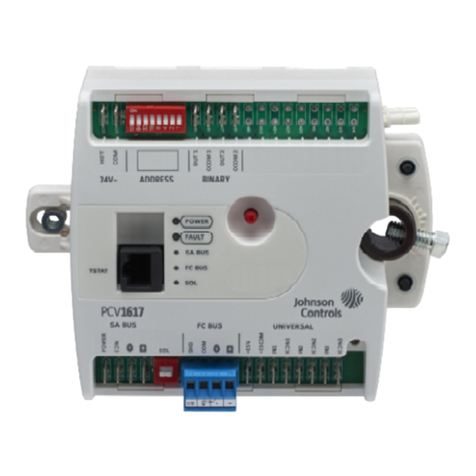
Johnson Controls
Johnson Controls FX-PCV1617 installation instructions
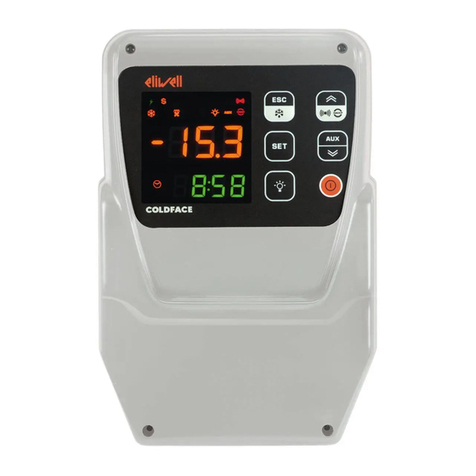
Eliwell
Eliwell EWRC 300 NT Series user manual
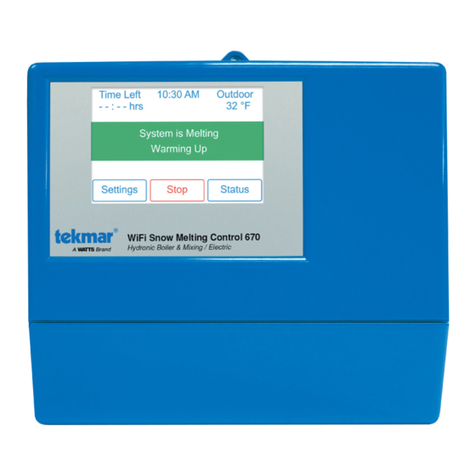
Watts
Watts Tekmar WiFi Snow Melting Control 670 installation manual

REAC
REAC RHC10 user manual

Xylem
Xylem CentriPro Aquavar Programming manual
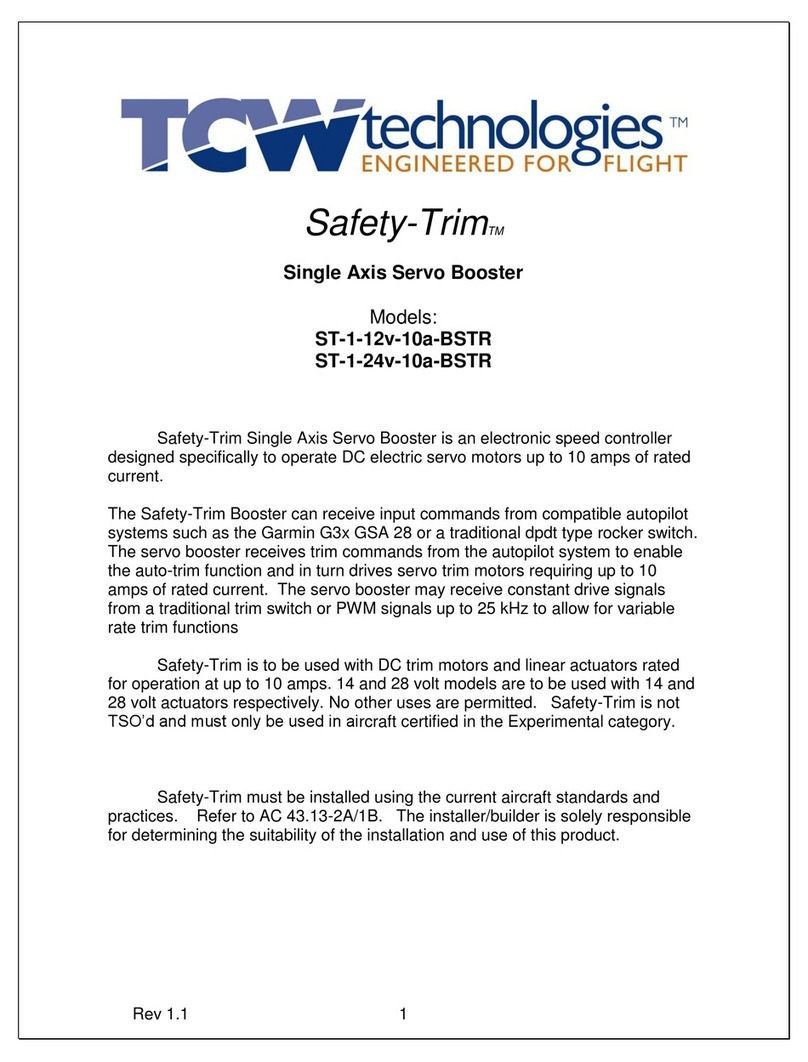
TCW Technologies
TCW Technologies Safety-Trim ST-1-12v-10a-BSTR manual
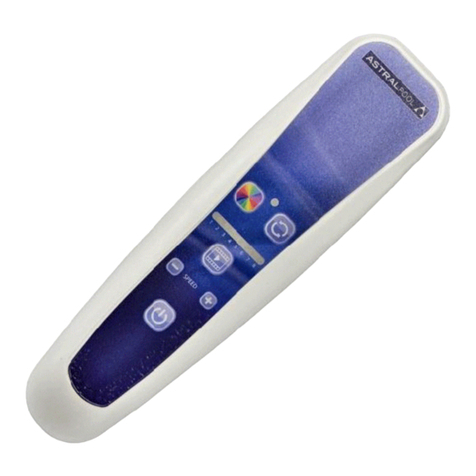
Astrapool
Astrapool LumiPlus quick start guide

Mercoid
Mercoid Series MPC Installation and operating manual
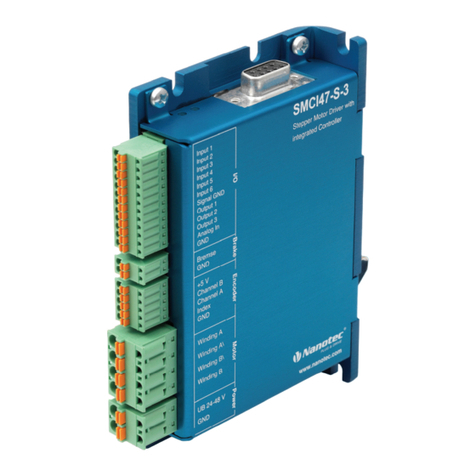
NANOTEC
NANOTEC SMCI47-S Technical manual
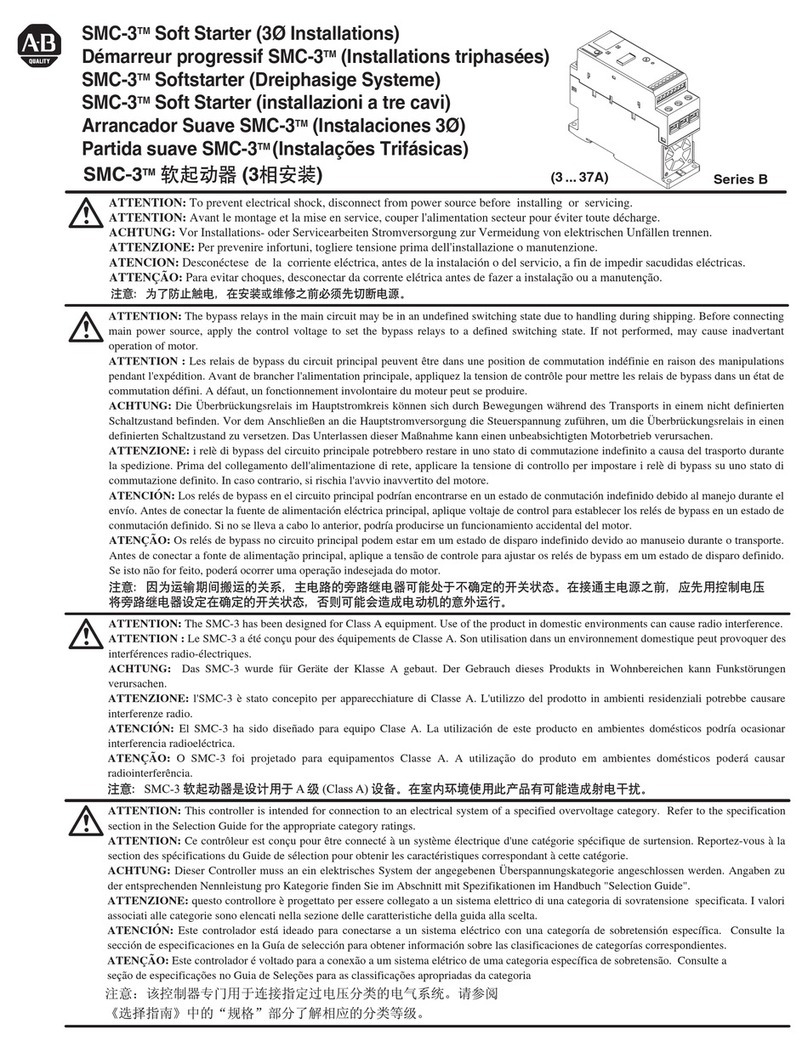
AB Quality
AB Quality SMC-3 150-C30NBD Installation
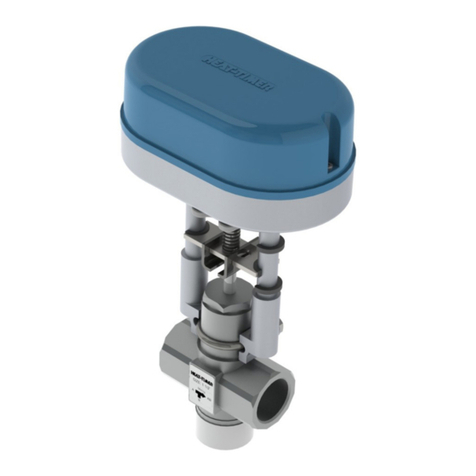
heat-timer
heat-timer HTC Installation and operation manual
